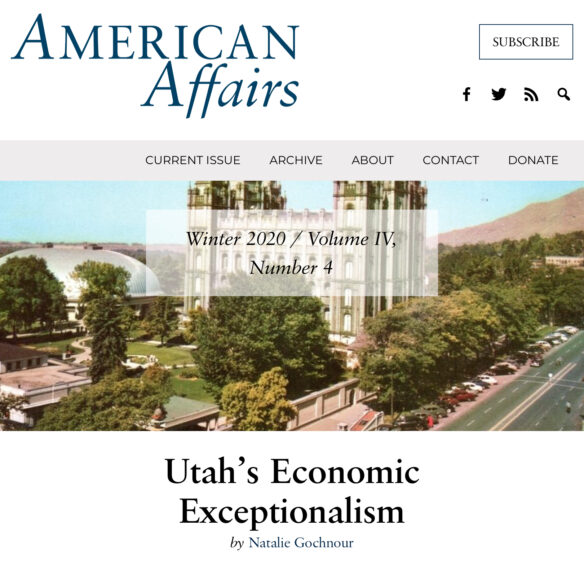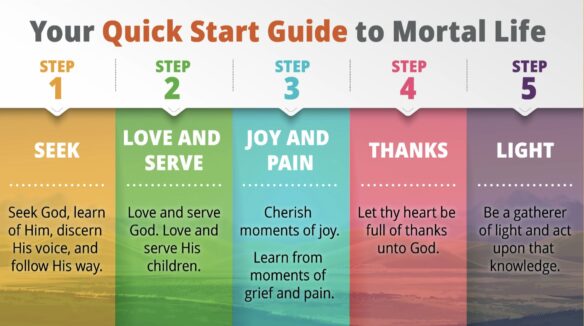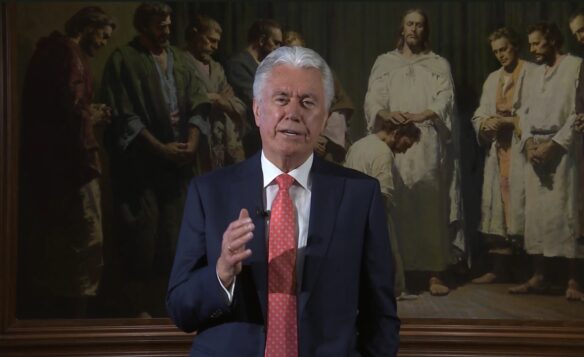If ye are prepared, ye shall not fear.[ref]D&C 38:30[/ref]
So often, we think of preparedness in terms of food storage or standing in holy places. But today a friend forwarded a link to an article in the political journal, American Affairs. Natalie Gochnour’s article, “Utah’s Economic Exceptionalism,” picks up where Megan McArdle left off in her 2017 Bloomberg article “How Utah Keeps the American Dream Alive.”

Economic health is often assessed in terms of a monthly index produced by the Federal Reserve Bank of Philadelphia, that combines four indicators of state economic health.
The economic index for the US and the vast majority of her states and territories has declined since the beginning of the COVID pandemic. For the US as a whole, the index has declined by 5.2 percent. Utah’s index has improved by 5.9 percent – notably the only US state to show an increase.
I’ve seen the cooperation and mutual care Ms. Gochnour describes on a smaller scale, within the family of my birth. I have eight siblings, and we have very different outlooks on life. Yet we share the hope that we will be family in the future, when we gather with our mother beyond the veil. This has caused us to work together in circumstances where other families have been torn apart. There is no index of thriving that measures the joy and peace our shared hope provides us, compared to peers who lack this shared hope. But in stressful circumstances affecting all of us, professionals exposed to a wide sample of families undergoing similar stress have commented on our mutual support and unity.
We can prepare by acquiring stores of food and supplies. We can also prepare by building trust and goodwill. By loving others as ourselves. By respecting one another and doing good to all.





